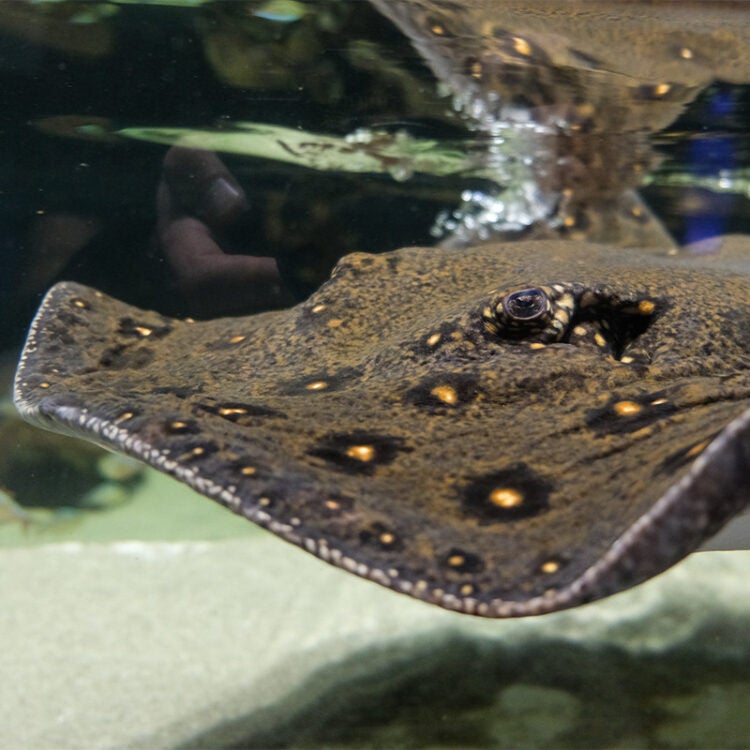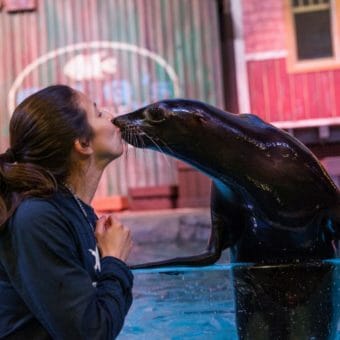-
Size
3.3 feet (1 m) -
Diet
Small fishes and invertebrates -
Range
River basins in Northern South America -
Habitat
Shallow, murky waters
Physical Characteristics
- Coloration is brownish with circular spots on the back and tail.
- Flattened, disc-shaped body. Short tail has no dorsal fin, while its small pelvic fins are tucked under its pectoral fins. Venomous spine on the tail.
- Can grow to about 3.3 feet (1 m) in diameter and weigh 33 lbs. (15 kg).
Animal Fact
Female motoro rays can give birth to up to 16 pups at a time.
Diet / Feeding
- Diet consists of small fishes and invertebrates.
- Commonly lies on the bottom, almost completely covered with sand, waiting for prey.
Range / Habitat
- Occurs in many of the river basins in Northern South America including the Amazon, Orinoco, Parana-Paraguay and Uruguay.
- Found in shallow, murky waters.
Reproduction & Growth
- Ovoviviparous: gives live birth to up to 16 pups at a time.
Conservation Status
- “Data Deficient” on the IUCN Red List.
Additional Information
- Also known as the “ocellate river stingray.”
- Powerful venom in its barb can cause severe pain – this animal is feared more than the piranha throughout its range.
- Barbs are replaced up to three times a year. Stingray barbs are a modified scale made of dentine, an enamel-based material much like dermal denticles on sharks and rays.
- Ancestors are from marine waters.
- Few predators except for some larger fish and the caiman.
Sources
- www.fishbase.org
- Sharks and Rays Guide to the World. Hennemann, R., pg. 221
- Smithsonian Institution Animal. Burnie, D. and Wilson, D., pg. 477





